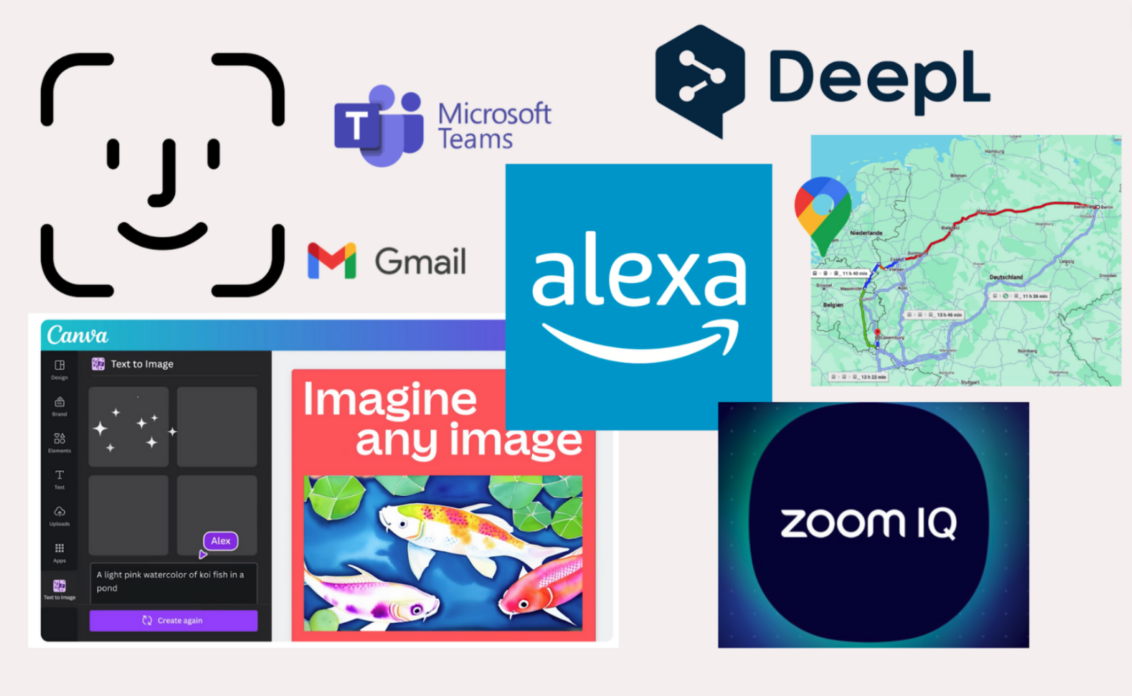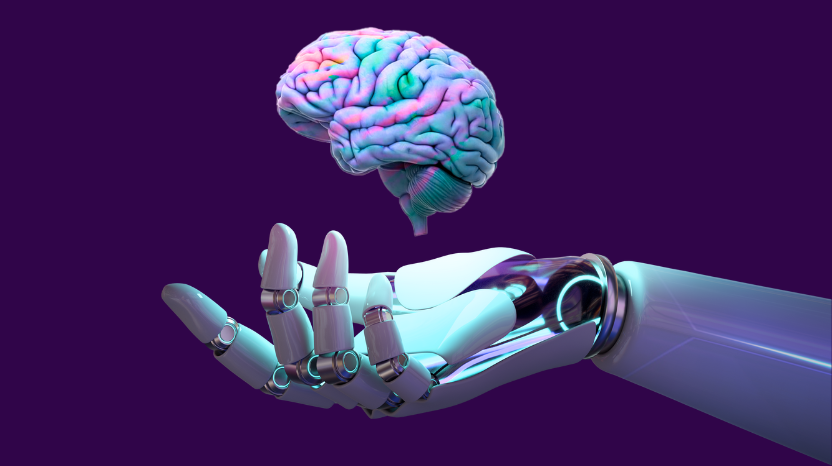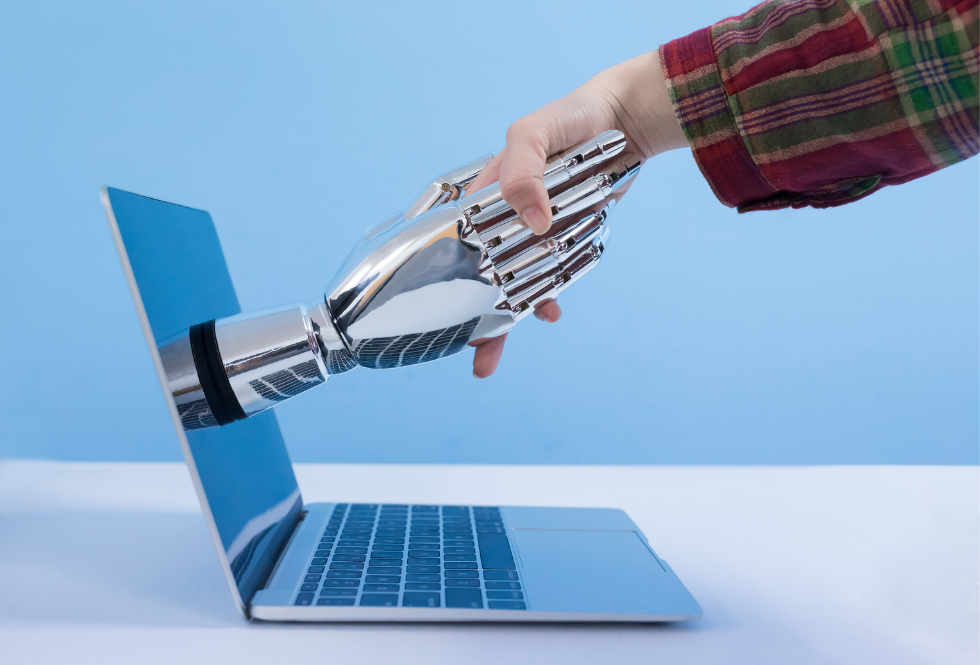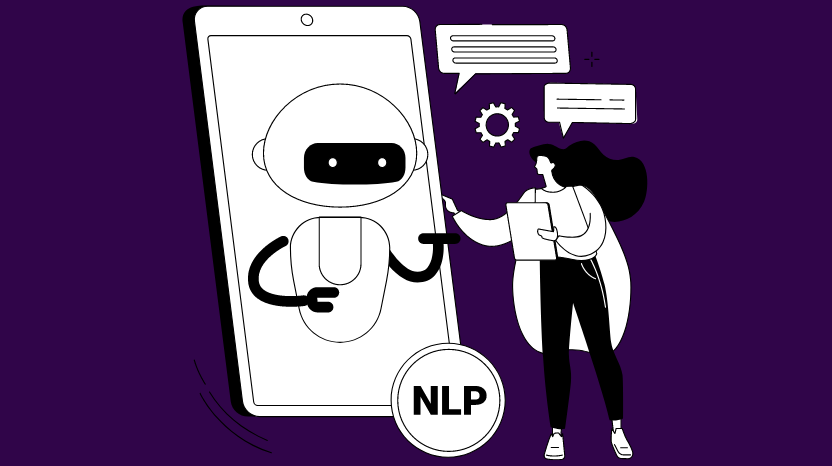Missed the boat on AI?

Artificial intelligence – we don’t need it. Many companies would probably have signed this sentence a year ago. ChatGPT had been released a few weeks earlier. Today, no company can avoid the question of what it is already using AI systems for. According to a Bitkom study, two thirds of companies consider AI to be the most important technology of the future. At the same time, 38 percent are concerned that they have missed the boat on new developments. They should know that it is not too late to start (and there is probably no alternative), because AI is here to stay and will change and shape almost every area of our working world in the coming years. Companies that are still unsure about how AI will affect their work can take a step-by-step approach. HR is an ideal area for this. I’ll come to why and how this can work in detail in a moment.
No AI is not a solution either
The first step, however, is to overcome general fears of AI. This can be achieved by consciously questioning and adapting our own mindset. Companies can accept that they do not yet understand everything. They can allow themselves to learn and try out new things. It also helps to realize that they are probably already using AI as a matter of fact without even realizing it – see the following illustration:

These examples also show that organizations do not have to immediately purchase a large, complex software package costing several million euros. Instead, they can start small and proceed step by step. In that way, they can gradually open up areas in which AI systems can bring them measurable improvements. In the Bitkom study mentioned above, for example, more than half of the companies using Artificial Intelligence highlighted the reduction of human error as one of the greatest benefits, followed by the acceleration of processes.
Improving HR work with AI
Especially in HR, AI systems can make work easier and bring benefits for both HR experts and employees. The following areas of application are already showing good results:
1. AI diagnostics: personality tests and skills analyses to gain deeper insights into employees’ strengths and development potential.
2. Employee development: AI-supported learning and development programs that are individually tailored to employees’ needs and career goals.
3. Recruitment: tailored job advertisements, talent acquisition, including automated CV analysis and pre-selection of suitable candidates.
4. Process automation: time tracking, leave management and onboarding.
5. Performance assessment.
6. Employee engagement and satisfaction: AI analysis of employee feedback and sentiment to identify trends and proactively address needs.
7. Diversity management: AI-supported analyses to promote diversity and inclusion in the company.
Ask the right questions* in advance (*here they come)
To get started in your company, you should first ask yourself which of the areas mentioned above would benefit most from AI. What specific challenges in diagnostics, employee development, recruitment and other HR processes do you want to address? Define specific, measurable goals that you want to achieve with the help of AI.
In the next step, look for possible providers. Ask yourselves: What experience and references do the various AI providers have specifically in the HR context? And: How do the functions of the AI tools on offer cover our specific HR requirements?
After a pre-selection, look at the details
- Data protection: how do the providers ensure the protection and confidentiality of employee data?
- User-friendliness and training requirements: How user-friendly are the tools and what level of training is required for the HR team?
- System integration and technical requirements: How can the AI tools be integrated into our existing HR infrastructure?
- Provider support and technical maintenance: What support does the provider offer for technical or usage-related issues?
- Risk management and data security: What security measures and emergency strategies are implemented for the AI tools?
Then focus once again on your resources, goals and values. Weigh up the costs and benefits: what return on investment can you expect from using the AI tools? Ethical questions should also be discussed at this point at the latest: How do you ensure that the AI solutions comply with ethical standards and make decisions free from bias? – Many providers of AI systems have dealt intensively with the legal and ethical framework conditions in recent years and can provide support here.
Address resistance within the workforce and create a shared understanding of how Artificial Intelligence can be used in the company and where the (current) boundaries lie. At the same time, you can contribute to a better understanding of the technology and reduce fears with further training programs. (Spoiler: zortify also offers coaching on AI. 🤓) Give employees the freedom they need and encourage them to learn more about AI on their own. And finally: start small – with pilot projects and hands-on tools that don’t require time-consuming implementation and allow you to exit at any time. Start with one aspect of HR work, learn from the experience and then gradually expand the application as the technology benefits you.
Conclusion
The sudden rise and rapid development of Artificial Intelligence has overwhelmed many companies. But as with all new technologies, it’s perfectly okay not to be one of the first, the early adopters. But it is not good to permanently turn a blind eye to new developments and opportunities. Especially not if they benefit the company and the people who put their skills and time at the service of the organization. Find out what AI can do for you in specific terms. Try things out, reflect, adapt and, as in other areas of life, trust your common sense. It will be a good compass for you when dealing with AI and navigate you through the fascinating possibilities that new technology offers.

AI vs. Human Intelligence

Building Trust with Explainable AI: Techniques and Approaches
